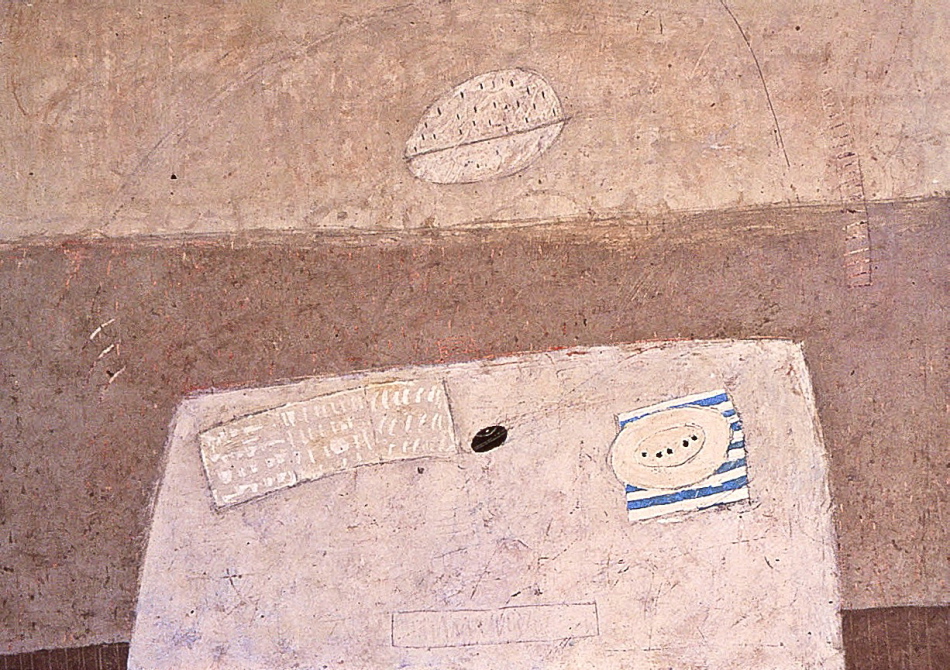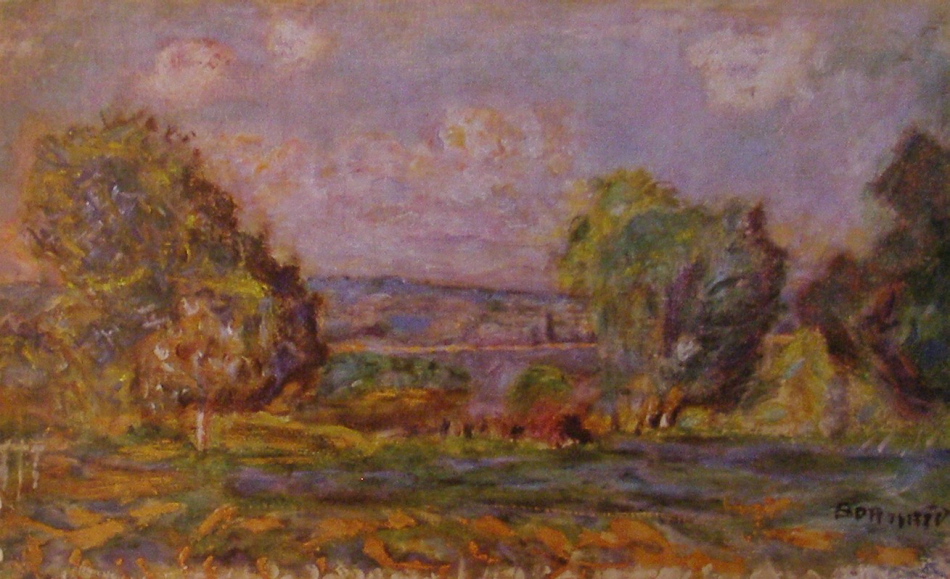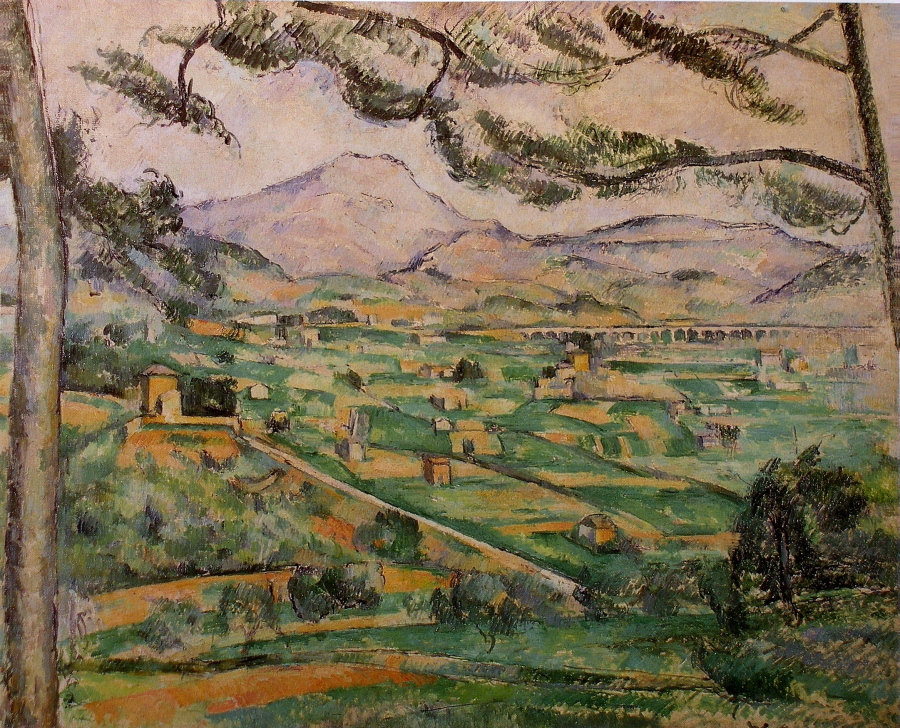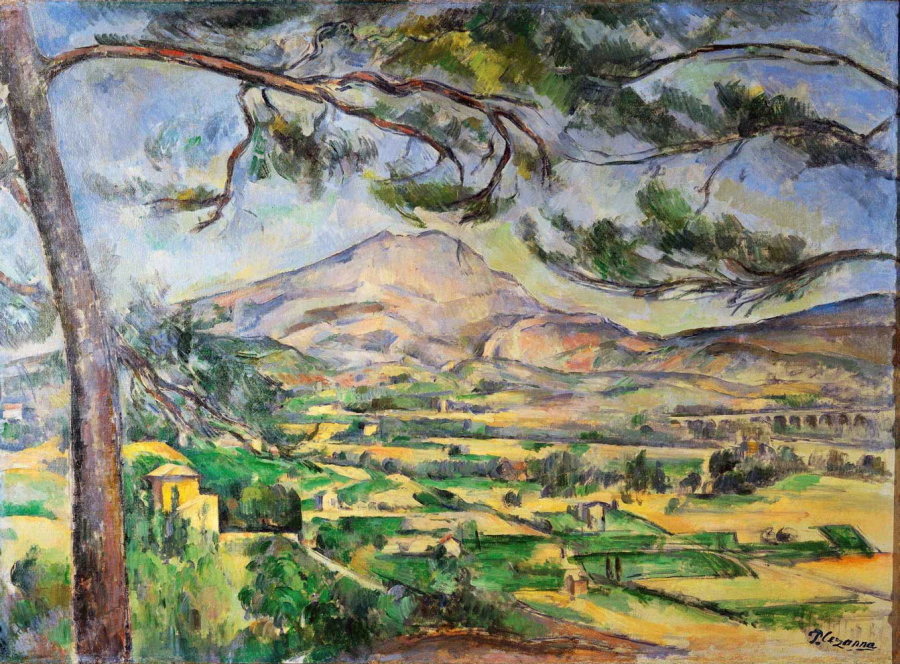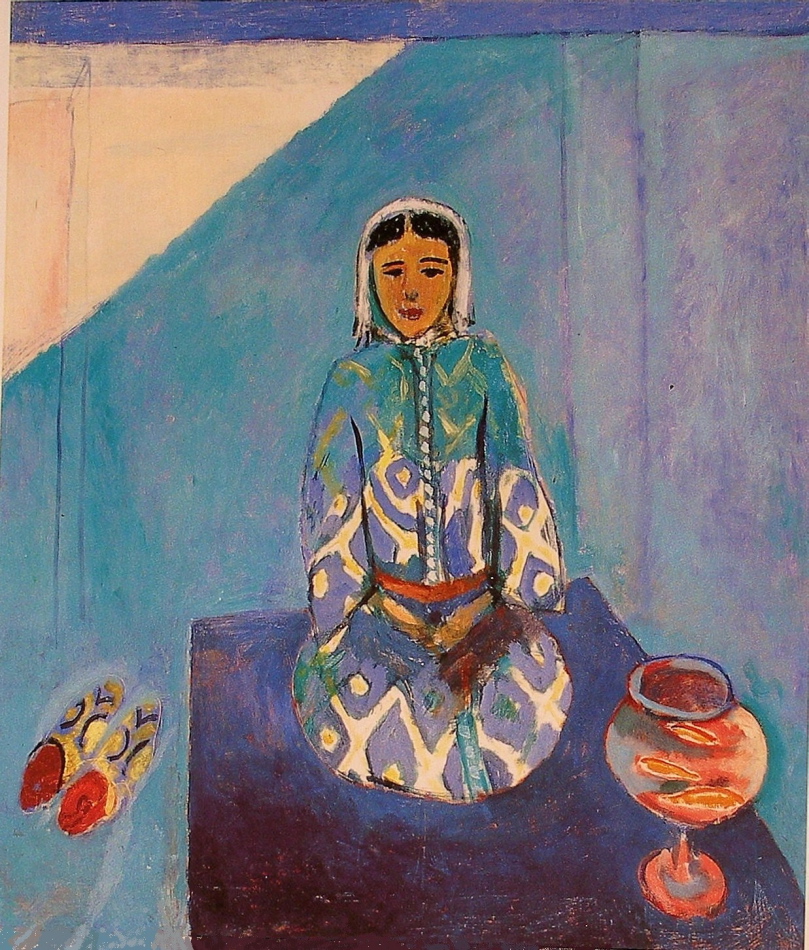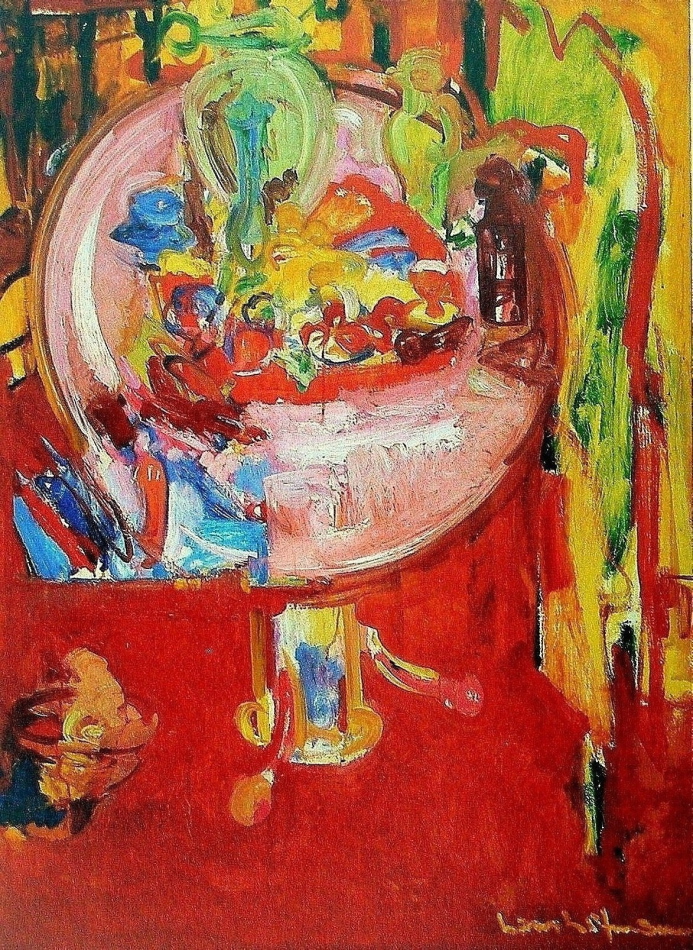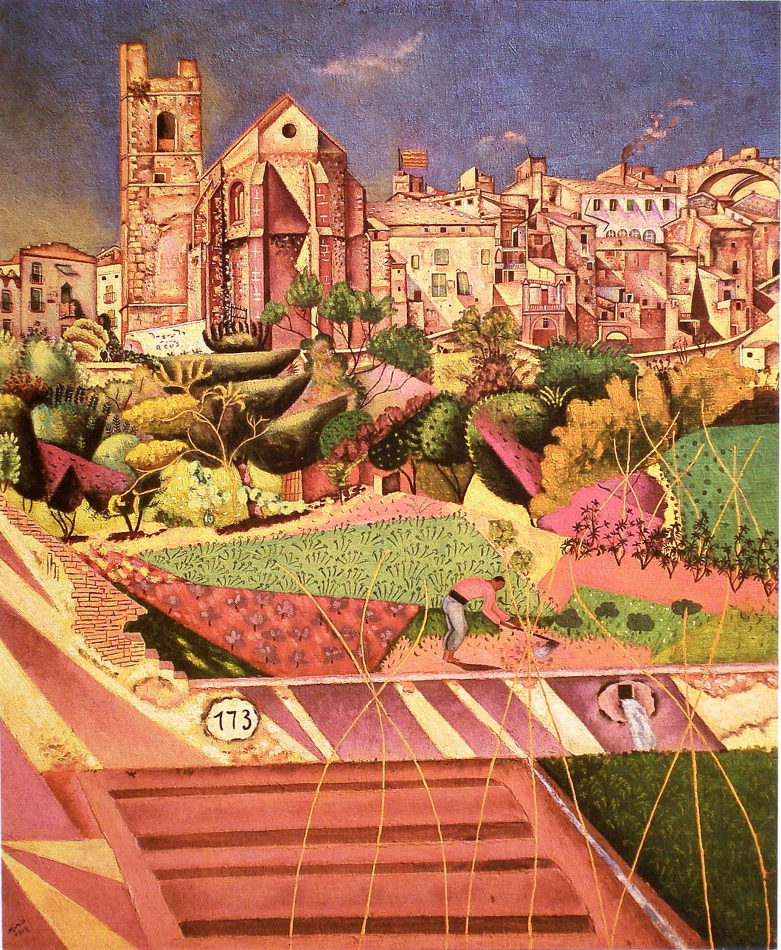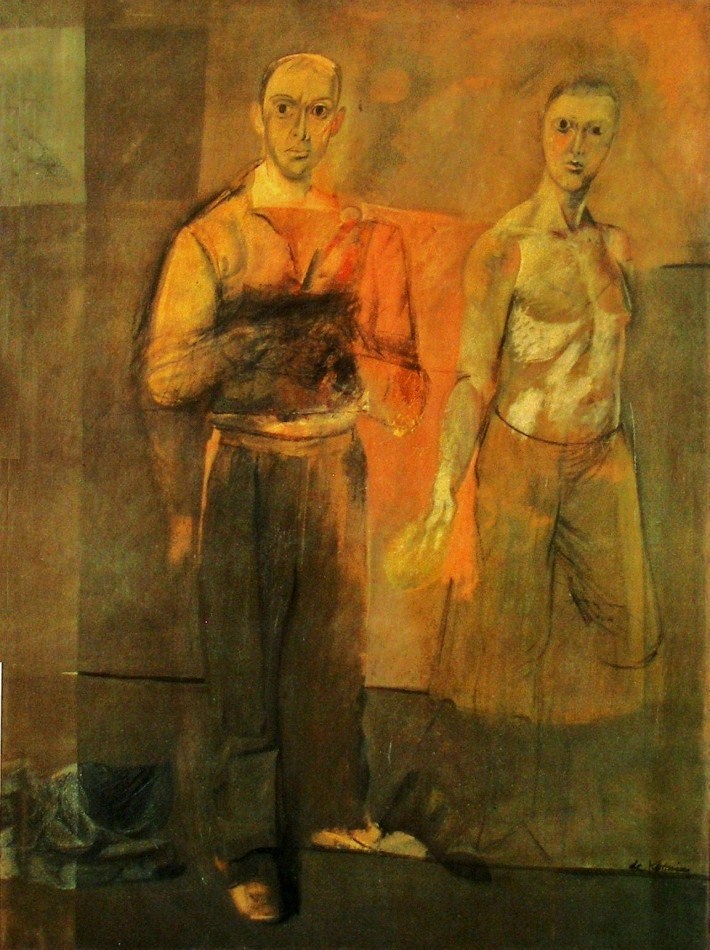Max Beckman’s paintings are very strong in many ways and in this painting we will look at his superbly considered compositional structure.
I am first drawn to the two wonderful half ovals. The table, which has been raised to the picture plane, and the other behind the figure at the left of the painting. I love how they support the figure and am very impressed with his integration of the black line entering the composition at the bottom left, with the table and how we are guided to the little Pekingese, which in turn integrates with the bottom edge of the larger half oval.
Now to his wonderful integration of the figure, her bouquet and the flowers above her left shoulder. Can you feel your eye moving up from her right leg to her bouquet and then to the the left edge of the flowers and how this unites the figure and the background? There is another sophisticated one leading from the dog to the bottom of the bouquet to a line taking you to the flowers above her shoulder. It really is superb and it also supports her embrace of the dog.
There are other connections to find and enjoy especially how he supported her head with the two vertical lines above. Note how they curl towards her, supprting the curve of her cheek. They are a very important compositional consideration because she is now beautifully connected to the top of the painting!


